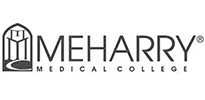Clearsense, a key partner of Imosphere, used Atmolytics' technology to help Meharry Medical College launch a data science institute and drive predictive insights for underserved patients in fewer than 24 months.
Located in Nashville, Tennessee, Meharry Medical College is an academic health sciences centre that comprises schools of medicine, dentistry and graduate studies, and exists to improve the health and healthcare of minority and underserved communities.
To execute on that mission, Meharry Medical College offers excellent educational and training programs in the health sciences and conducts research that fosters the elimination of health disparities.
The vision was to expand those research capabilities and, in doing so, to drive down costs and improve the level of care for Meharry’s underserved and minority patient populations.
Today, the Meharry Data Science Institute, powered by Clearsense and supported by Atmolytics’ technology, is quickly bringing this vision to life. Since launching the institute in September 2018, the team have redefined the curriculum for future medical professionals, discovered critical relationships in their data, and begun to improve health care for underserved patient populations.
I wanted to say how very happy we are with the launch of our Data Science Institute and the Atmolytics tool - it indeed is simply amazing. We have had a great thrust of 'Bench to Bedside' discovery with the tool.
Senior Advisor to the President - Technology & Innovation
The research teams are shaving years off their timelines. Discovering powerful insights in hours, not months, they are fast-tracking grant applications in days, not years. By identifying relationships across a much more complete picture of the population, Meharry’s teams are uncovering questions that go much deeper than clinical information and have the potential to lay the groundwork for preventive social programs.
One of their researchers was able to translate his bench research work to a clinical phenotype. This accelerated his research by eliminating the need for mouse models, thus saving two years of research time.


- 250,000 Patients
- 2 million Encounters across primary, secondary and dental data sources
- 80 million Clinical observations